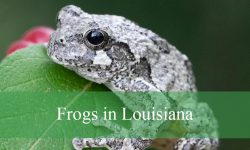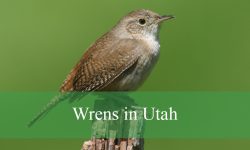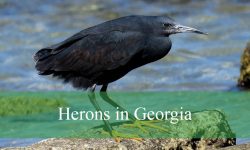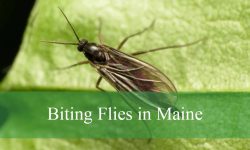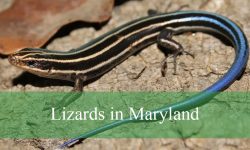Hawaiʻi’s tropical climate is not only a paradise for plants and wildlife but also a hotspot for invasive species. Among the most problematic are snails and slugs, which have been accidentally introduced through global trade and agriculture.
These invaders may look harmless, but they bring serious consequences. From damaging crops and gardens to spreading rat lungworm disease, invasive snails and slugs threaten both human health and Hawaiʻi’s fragile ecosystems.
In this guide, we’ll explore 15 invasive snails and slugs found in Hawaiʻi, complete with pictures and identification tips. Understanding these species is the first step toward controlling their spread and protecting native biodiversity.
Types of Invasive Snails and Slugs in Hawaii
Giant African Snail (Lissachatina fulica)
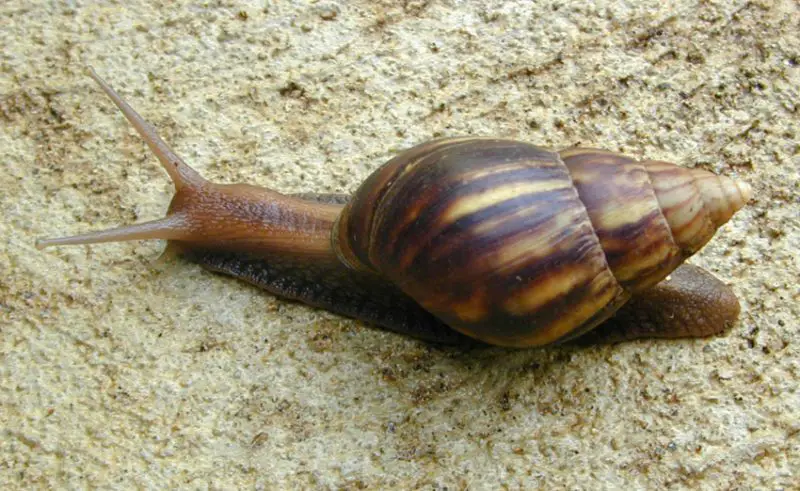
The Giant African Snail is one of the largest land snails in the world, capable of growing up to 8 inches in length. Its elongated, conical shell is brown with darker stripes, making it easy to distinguish from other species. This snail is native to East Africa but has spread worldwide through trade and accidental introductions. In Hawaiʻi, it is a major invasive species, thriving in gardens, agricultural lands, and moist tropical environments.
This snail is highly adaptable, feeding on more than 500 different plant species. It consumes fruits, vegetables, flowers, and even the bark of trees, which makes it a severe agricultural pest. Farmers and gardeners in Hawaiʻi often report heavy damage to crops such as lettuce, papaya, and ornamentals. Its feeding habits not only destroy plants but also reduce crop yields and quality, leading to significant economic losses.
Beyond agriculture, the Giant African Snail poses serious ecological risks. It competes with native snails for food and habitat, further threatening Hawaiʻi’s already vulnerable snail biodiversity. Additionally, its sheer size and prolific breeding allow populations to explode quickly if left unmanaged. Females can lay hundreds of eggs per year, ensuring rapid spread in favorable environments.
A major human health concern linked to this snail is its role as a host for the rat lungworm parasite (Angiostrongylus cantonensis). This parasite can cause eosinophilic meningitis in humans, a potentially severe neurological disease. Because of this, the Giant African Snail is not just an agricultural pest but also a public health threat, making its control and management in Hawaiʻi a top priority.
Golden Apple Snail (Pomacea canaliculata)
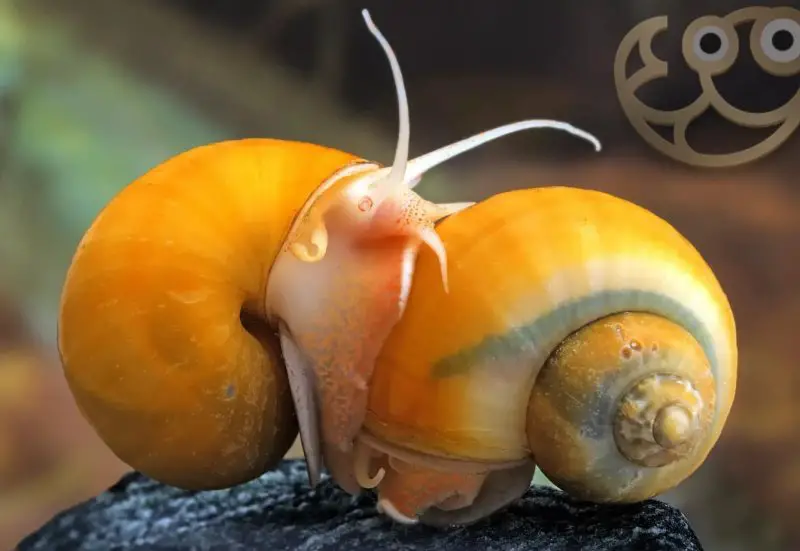
The Golden Apple Snail is an aquatic snail that originates from South America but has been introduced to many parts of Asia and the Pacific, including Hawaiʻi. It has a rounded shell that is often yellowish to brown, which is why it is commonly called the golden apple snail. In Hawaiʻi, it inhabits wetlands, streams, taro patches, and rice paddies, where it feeds on aquatic vegetation.
This species is notorious for damaging taro crops, a culturally and economically important plant in Hawaiʻi. Apple snails consume taro leaves and corms, making it difficult for farmers to sustain their harvests. Infestations can lead to major losses in taro cultivation, threatening both local food security and cultural traditions tied to this crop. Their feeding also destabilizes aquatic habitats by stripping vegetation that provides shelter for fish and other wildlife.
The snail’s reproductive abilities also make it a resilient invader. Females lay clusters of bright pink eggs above the waterline, a strategy that prevents predators from easily accessing them. Each egg cluster can contain hundreds of eggs, ensuring rapid population growth. This characteristic makes management especially challenging, as a few individuals can establish a thriving population in a short period.
Like other invasive snails, the Golden Apple Snail is a carrier of parasites, including rat lungworm, which poses risks to human health. For this reason, residents and farmers are advised to handle these snails with caution and avoid consuming raw vegetables that might have come into contact with them. Its combined ecological, agricultural, and health impacts make it one of Hawaiʻi’s most destructive invasive species.
Rosy Wolfsnail (Euglandina rosea)
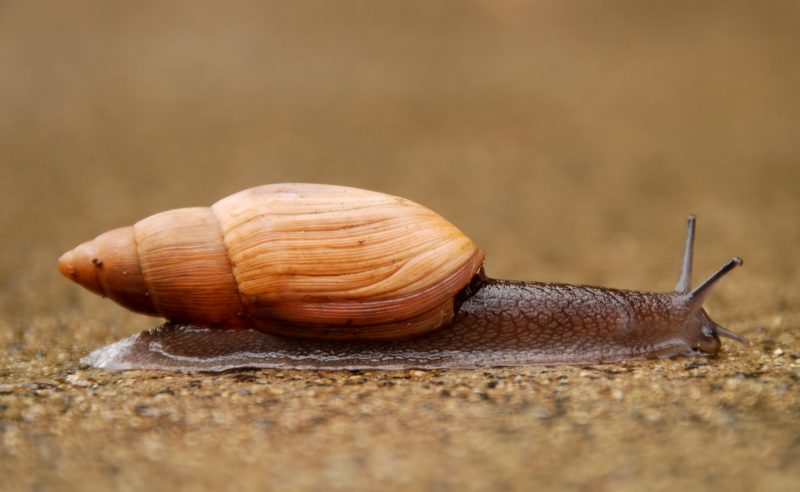
The Rosy Wolfsnail is a large, predatory land snail that was introduced to Hawaiʻi in the 1950s. Originally from the southeastern United States, it was brought in as a biological control agent to combat the Giant African Snail. Unfortunately, instead of primarily targeting the intended pest, the Rosy Wolfsnail has devastated Hawaiʻi’s native tree snails, many of which are now endangered or extinct.
This species is slender, with a glossy, reddish-brown shell and a long, pointed body. Unlike herbivorous snails, the Rosy Wolfsnail actively hunts other snails and slugs. It uses chemical cues to track prey, moving quickly across leaf litter and vegetation to find smaller snails. Once it captures prey, it consumes them whole, often wiping out entire populations of native snails in localized areas.
The ecological consequences of its introduction have been severe. Hawaiʻi is home to a unique diversity of native snails, many of which evolved in isolation and had no natural defenses against a fast and efficient predator like the Rosy Wolfsnail. Entire species of tree snails, once common in Hawaiian forests, have disappeared due to predation. This loss represents not only a decline in biodiversity but also a cultural loss, as native snails hold importance in Hawaiian traditions.
Efforts to manage Rosy Wolfsnail populations have had limited success. Because it is widespread across the islands and capable of reproducing quickly, eradication is not feasible. Conservation programs now focus on protecting the remaining native snail species through captive breeding, predator-proof enclosures, and habitat protection. The Rosy Wolfsnail remains a stark reminder of the unintended consequences of biological control.
Asian Tramp Snail (Bradybaena similaris)
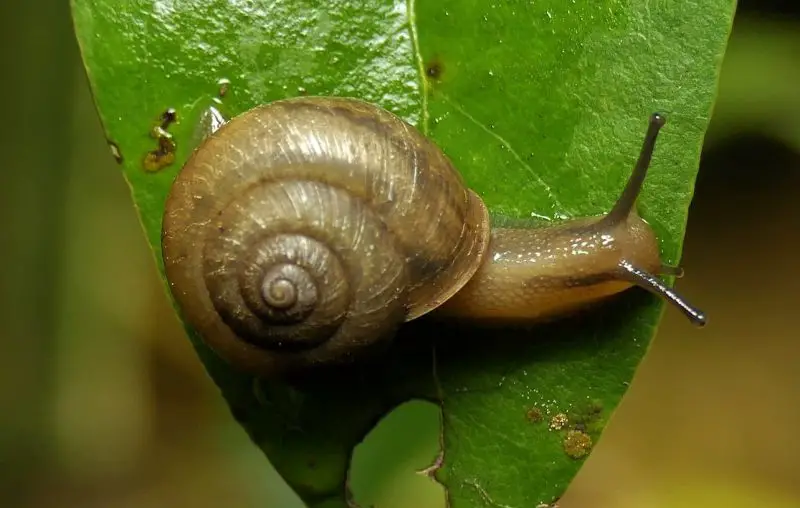
The Asian Tramp Snail is a small land snail that has spread globally through the transport of ornamental plants, soil, and agricultural products. Its shell is typically brown with faint bands, and the snail itself is relatively small, usually under one inch in size. Despite its unassuming appearance, it is a highly invasive species that has established itself firmly in Hawaiʻi.
This snail thrives in urban gardens, nurseries, and agricultural fields. It feeds on a wide variety of plants, including vegetables, flowers, and fruits. Farmers often report damage to seedlings and ornamental plants, as this snail tends to consume tender leaves and shoots. Its habit of congregating in large numbers makes the damage more severe, especially in moist environments where it reproduces quickly.
The Asian Tramp Snail is also a concern for international trade. Because it frequently hitchhikes on plants and soil, it is considered a quarantine pest in many regions. Shipments from Hawaiʻi to other areas are often inspected to prevent its spread, and its presence can result in costly export restrictions. This makes it not just a local agricultural problem but also an economic challenge on a global scale.
Health risks are another factor. Like many invasive snails in Hawaiʻi, the Asian Tramp Snail can serve as a host for rat lungworm parasites. Although it is smaller than species like the Giant African Snail, its ability to spread disease and damage plants makes it a significant invasive species. Its adaptability to both urban and rural settings ensures that it will continue to be a persistent pest in Hawaiʻi.
Brown Garden Snail (Cornu aspersum)
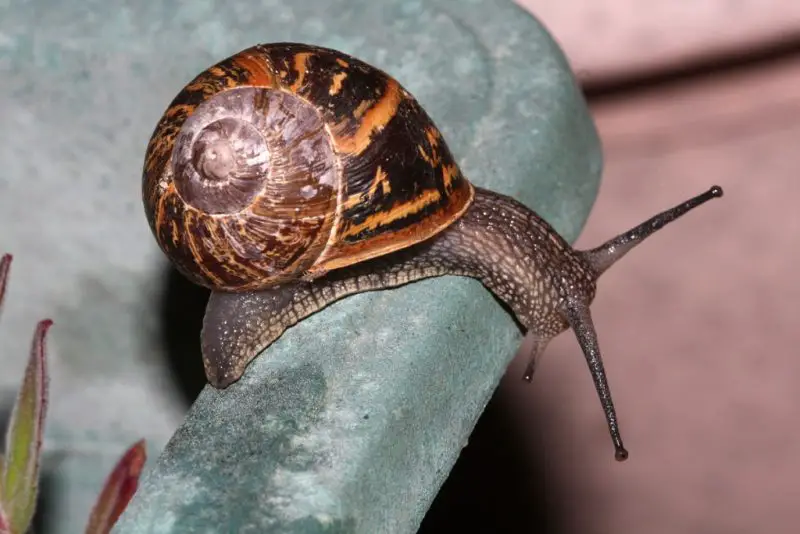
The Brown Garden Snail, also known as the European Brown Snail, is one of the most familiar snail species worldwide. Originally from Europe, it was deliberately introduced to Hawaiʻi as a potential food source in the 1800s. Over time, however, it became a widespread garden pest, found in backyards, farms, and nurseries across the islands.
This snail is medium-sized, with a rounded, coiled shell that has a mottled brown pattern. It feeds mainly at night or during moist conditions, preferring young plant shoots, leaves, and flowers. Its slow movement belies its destructive nature, as it can defoliate seedlings and stunt the growth of ornamental and agricultural plants. In Hawaiʻi, it commonly affects crops such as lettuce, beans, and ornamentals.
The Brown Garden Snail is also an issue in terms of trade and regulation. Like the Asian Tramp Snail, it is considered a quarantine pest. Shipments containing soil or plants infested with this snail may face restrictions, leading to financial consequences for exporters. This makes its management important not just for agriculture but also for Hawaiʻi’s nursery and landscaping industries.
In addition to its agricultural impact, the Brown Garden Snail is a potential carrier of harmful parasites, including rat lungworm. While it is less prolific than species like the Giant African Snail, its combination of ecological, economic, and health impacts firmly places it among the most problematic invasive snails in Hawaiʻi. Its widespread distribution makes eradication unlikely, so control efforts focus on reducing populations in sensitive areas.
Tropical Leatherleaf Slug (Laevicaulis alte)
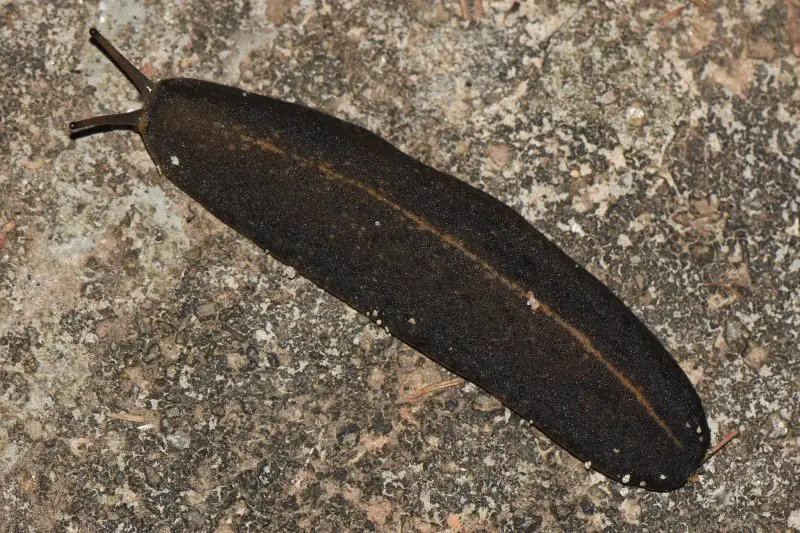
The Tropical Leatherleaf Slug, Laevicaulis alte, is a large terrestrial slug native to Africa but now found across many tropical and subtropical regions, including Hawaiʻi. Its body is elongated, leathery, and flattened, typically brown to gray in color with a faint longitudinal stripe. Unlike snails, it lacks an external shell, making it more flexible and able to squeeze into tight spaces in gardens and agricultural fields.
This slug is a serious pest of agriculture and horticulture. It feeds on a wide range of crops and ornamental plants, including lettuce, cabbage, beans, and flowers. Because it is nocturnal, the damage often appears overnight as irregular holes in leaves and stems. Farmers and gardeners in Hawaiʻi frequently struggle with infestations, especially during the wet season when the slugs reproduce quickly.
Reproduction and dispersal also contribute to its invasive success. The Tropical Leatherleaf Slug is hermaphroditic, meaning individuals possess both male and female reproductive organs, which allows any two slugs to mate and produce offspring. Its eggs are deposited in soil or leaf litter, and under favorable conditions, populations can grow rapidly. This characteristic makes it especially difficult to control in Hawaiʻi’s moist environments.
In addition to damaging plants, Laevicaulis alte poses health risks to humans. It is a known intermediate host of the rat lungworm parasite, which can cause eosinophilic meningitis. For this reason, handling slugs without protection is strongly discouraged. The combination of agricultural damage and potential to spread disease makes the Tropical Leatherleaf Slug one of Hawaiʻi’s most problematic invasive pests.
Cuban Slug (Veronicella cubensis)
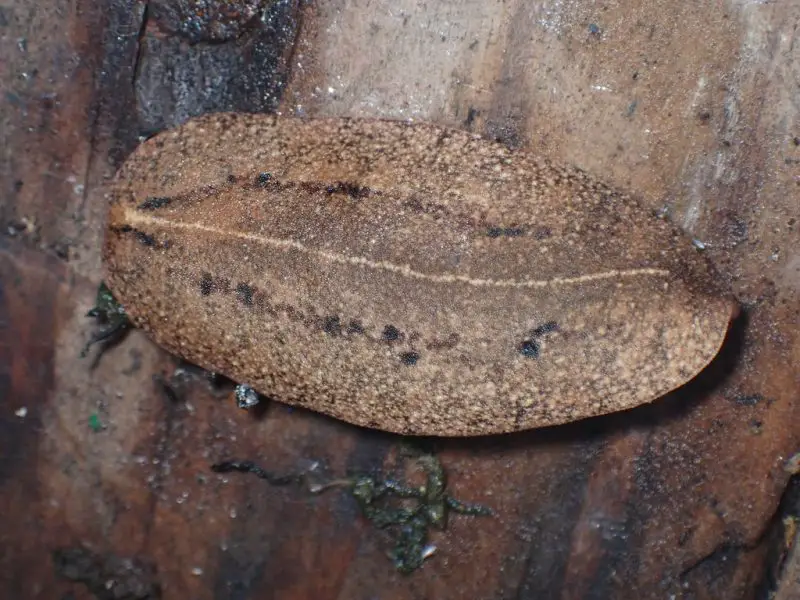
The Cuban Slug, Veronicella cubensis, is a large leatherleaf slug originally from the Caribbean region. Its body is long, smooth, and leathery, typically light brown to grayish in color. Unlike many other slug species, the Cuban Slug has a distinct mantle that covers most of its back, giving it a soft and uniform appearance. In Hawaiʻi, it thrives in gardens, nurseries, and agricultural lands.
This species is highly destructive to plants. It feeds on a wide variety of crops, including leafy greens, fruits, and ornamentals. Farmers often report severe damage to seedlings, as the Cuban Slug tends to consume tender plant tissues first. Its feeding habits can result in stunted plant growth and reduced yields, which pose serious challenges to commercial agriculture as well as backyard gardening.
Like other invasive slugs in Hawaiʻi, Veronicella cubensis reproduces quickly under warm and moist conditions. Its eggs are laid in clusters in soil or beneath leaf litter, where they remain protected until hatching. Once established, populations are difficult to eradicate, and outbreaks often coincide with the rainy season when the slugs are most active.
The Cuban Slug is also a vector of parasites, including the rat lungworm. This makes it not only an agricultural pest but also a public health concern. Its ability to spread across residential areas, farms, and forests increases the risk of human exposure. Controlling this species requires integrated management strategies, including hand collection, barriers, and careful monitoring of plant shipments.
Semi-slug (Parmarion martensi)
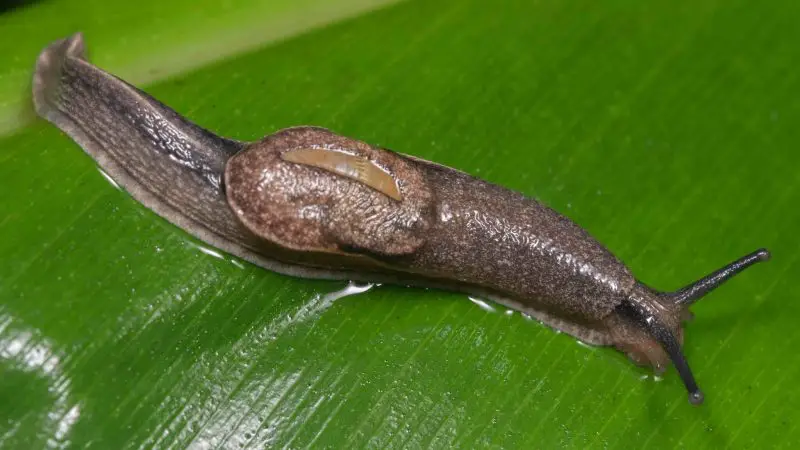
The Semi-slug, Parmarion martensi, is a unique mollusk that combines features of both snails and slugs. It has a small, partially developed external shell that does not fully enclose its body, giving it a slug-like appearance with a visible shell fragment on its back. This species is native to Southeast Asia but has become invasive in Hawaiʻi, where it has gained notoriety for its role in spreading rat lungworm disease.
Unlike other snails and slugs, the Semi-slug is particularly dangerous to human health. Studies in Hawaiʻi have shown that Parmarion martensi carries the rat lungworm parasite at much higher rates than other species. Because of this, it is considered the primary vector responsible for cases of eosinophilic meningitis in the islands. Its ability to climb walls, vegetation, and even water tanks increases the likelihood of contaminating food and water sources.
The Semi-slug is also a resilient agricultural pest. It feeds on a variety of crops, including leafy vegetables and fruits, causing economic losses for farmers. Its nocturnal behavior makes it difficult to detect, and its ability to hide in soil, leaf litter, and under debris provides protection from predators and environmental stresses. Populations expand rapidly during wet weather, when eggs hatch in abundance.
Managing Parmarion martensi is a serious challenge in Hawaiʻi. Because of its health risks, control measures focus on reducing human exposure through public education, safe food handling, and controlling populations in residential areas. Its presence has elevated concern about invasive mollusks in Hawaiʻi, making it one of the most dangerous invasive species from a public health perspective.
Marsh Slug (Deroceras laeve)
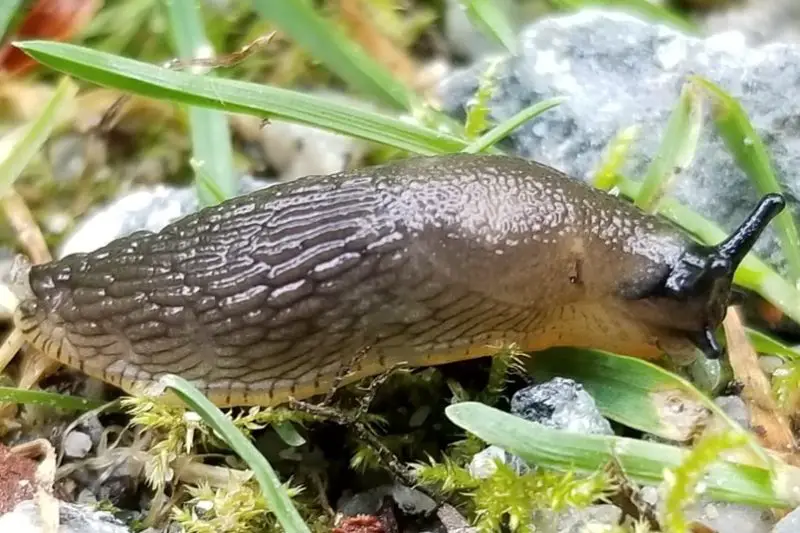
The Marsh Slug, Deroceras laeve, is a small slug species native to Europe and North America but now established in Hawaiʻi. Its body is soft, slimy, and usually grayish or brown in color, measuring only about 1–2 centimeters in length. Despite its small size, this slug is highly adaptable and can thrive in diverse habitats, from marshy areas to agricultural fields and residential gardens.
This slug feeds on a wide range of vegetation, including tender seedlings, leaves, and decomposing plant matter. Its preference for moist habitats makes it particularly problematic during rainy seasons, when populations multiply quickly. Farmers often find them damaging crops such as lettuce, cabbage, and beans, reducing yields and affecting overall plant health.
One of the defining characteristics of the Marsh Slug is its ability to survive in both aquatic and terrestrial environments. Unlike many other land slugs, it tolerates wetter conditions and can even be found along the edges of streams, ponds, and wetlands. This adaptability allows it to colonize habitats that other invasive slugs cannot, giving it an advantage in Hawaiʻi’s diverse ecosystems.
Though smaller than other invasive species, Deroceras laeve still poses risks to agriculture and biosecurity. It can act as a vector for parasites and plant diseases, making its presence an indirect threat beyond simple crop damage. Its inconspicuous nature and ability to reproduce quickly mean it often goes unnoticed until populations are well established, complicating management efforts.
Gray Field Slug (Deroceras reticulatum)
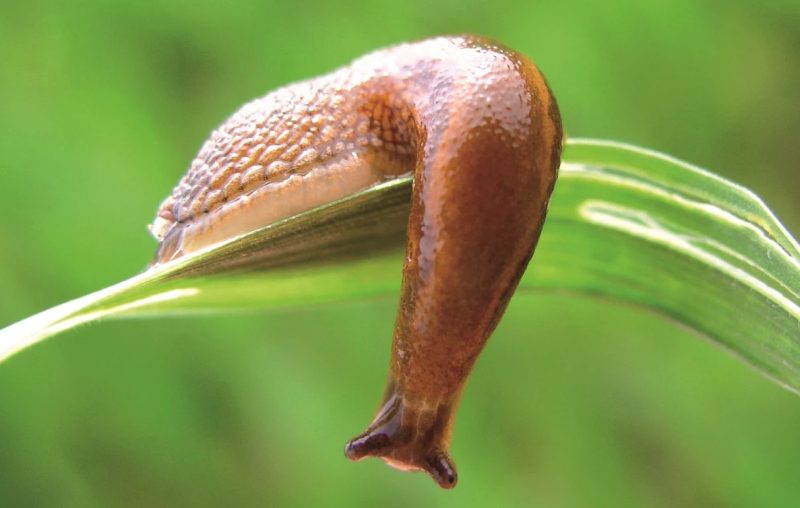
The Gray Field Slug, Deroceras reticulatum, is one of the most common and destructive slug pests worldwide. It has a soft, slimy body that is usually gray to light brown with a mottled or reticulated pattern, giving it a camouflage-like appearance. In Hawaiʻi, it has adapted well to gardens, farms, and moist environments where it can find ample food sources.
This slug is especially harmful to agriculture. It feeds aggressively on seedlings, leafy vegetables, and cereals, often causing major damage before plants can establish themselves. Farmers in Hawaiʻi and elsewhere report significant economic losses due to this species, as it can wipe out young crops overnight. The damage includes shredded leaves, holes in stems, and destroyed seedlings.
Deroceras reticulatum reproduces rapidly under favorable conditions. Each individual is hermaphroditic and capable of producing multiple clutches of eggs per year. The eggs are usually deposited in moist soil or under debris, where they are protected from predators and environmental extremes. This reproductive strategy allows populations to expand quickly, particularly during wet weather.
In addition to direct crop damage, the Gray Field Slug poses risks as a vector for parasites and plant pathogens. Like other invasive slugs in Hawaiʻi, it is capable of transmitting the rat lungworm parasite to humans through contaminated produce. Its combination of widespread distribution, rapid reproduction, and impact on crops makes it one of the most difficult invasive slugs to control in agricultural areas.
Subulina Snail (Subulina octona)
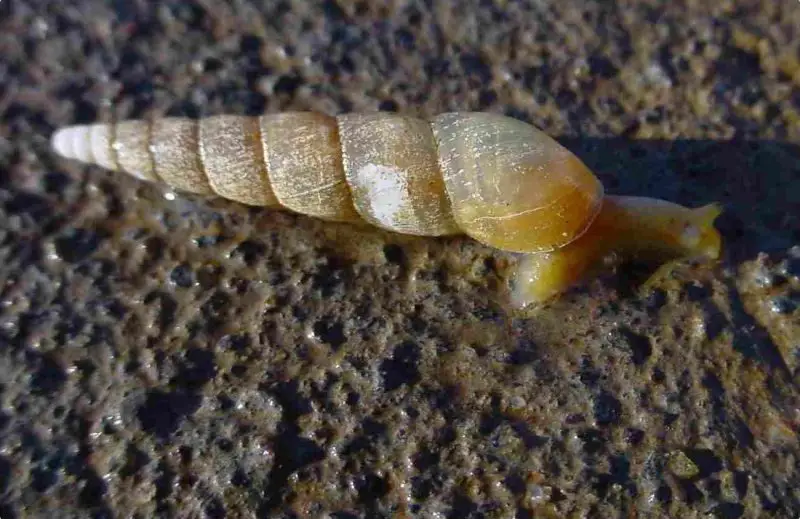
The Subulina Snail, Subulina octona, is a small, slender land snail native to Central and South America but now widely distributed in tropical and subtropical regions, including Hawaiʻi. Its shell is elongated and conical, often pale yellow to light brown in color, measuring only about 1–1.5 centimeters in length. Because of its size, this species is easily overlooked, yet it is one of the most common invasive soil-dwelling snails.
In Hawaiʻi, the Subulina Snail thrives in moist soil, gardens, nurseries, and agricultural fields. It feeds on decaying organic matter, fungi, and tender plant tissues, making it both a decomposer and a minor crop pest. While it is not as destructive as larger snails, its presence in large numbers can cause noticeable damage to seedlings and young plants. This is particularly problematic in nurseries, where infestations may reduce the quality and marketability of plants.
The species reproduces prolifically, laying clusters of eggs in soil and leaf litter. Because of its small size and tendency to burrow into soil, infestations often go unnoticed until populations become dense. Once established, it spreads easily through the movement of soil, potted plants, and agricultural products, contributing to its global distribution.
Although its impact on human health is less studied compared to larger invasive snails, Subulina octona is a potential host for parasitic nematodes, including rat lungworm. Its widespread presence in residential areas and nurseries increases the likelihood of contamination, making it a species of concern for both agriculture and biosecurity in Hawaiʻi.
Paropeas Snail (Paropeas achatinaceum)
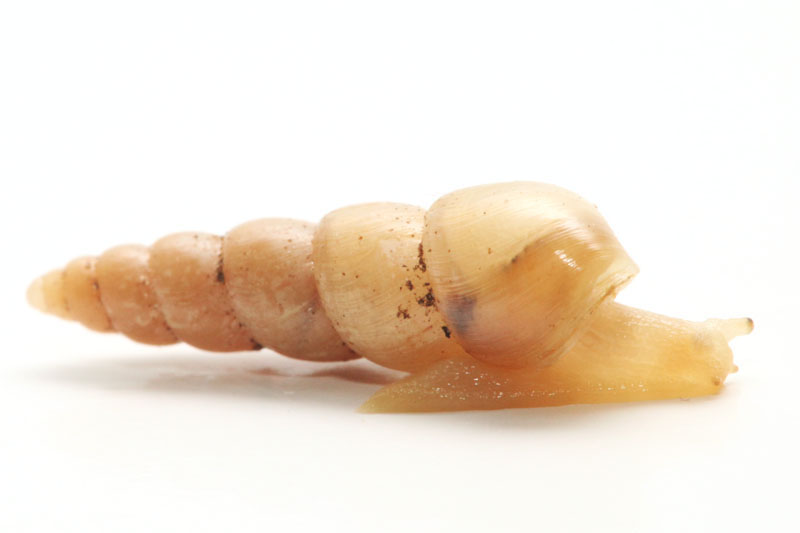
The Paropeas Snail, Paropeas achatinaceum, is another small, soil-dwelling invasive species in Hawaiʻi. Native to Southeast Asia, this snail has spread widely through the international movement of plants and soil. Its shell is slender, cylindrical, and light brown in color, measuring only a few millimeters in length. Despite its tiny size, it is remarkably resilient and often forms dense populations in suitable habitats.
In Hawaiʻi, this snail is commonly found in nurseries, gardens, and agricultural lands, particularly in moist soils rich in organic matter. It feeds on decaying vegetation, fungi, and occasionally live plant tissues. While it is not as significant an agricultural pest as larger species, infestations can still weaken young plants and reduce seedling survival. Its small size makes it difficult to control using conventional snail management methods.
The Paropeas Snail is also known for its ability to spread through potted plants, making it a quarantine concern for plant exports. Nurseries often face restrictions when these snails are detected, as they are considered hitchhikers that can establish themselves in new regions. This has implications for Hawaiʻi’s plant trade, where the presence of this snail can delay or block shipments.
Like other invasive snails, Paropeas achatinaceum has the potential to serve as a host for parasitic nematodes. While its exact role in disease transmission is less well documented, its abundance in soil and proximity to crops makes it a potential biosecurity risk. Control measures focus on sanitation, soil treatment, and careful inspection of nursery plants to prevent further spread.
Zonitoides Snail (Zonitoides arboreus)
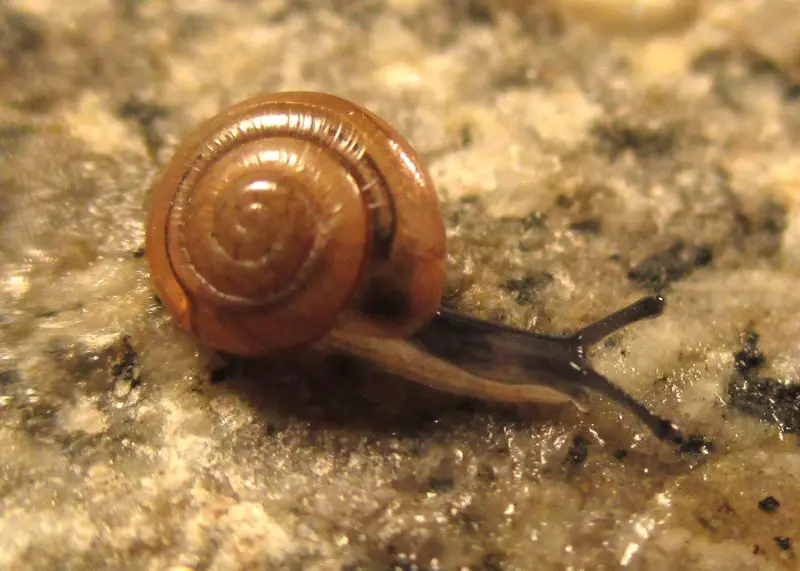
The Zonitoides Snail, Zonitoides arboreus, also known as the “quick glass snail,” is a small species native to North America that has spread to other parts of the world, including Hawaiʻi. Its shell is flattened, translucent, and light brown, typically less than 1 centimeter in diameter. Because of its glassy appearance, it is relatively easy to identify among other small invasive snails.
This species thrives in moist environments such as gardens, greenhouses, and nurseries. It feeds primarily on decaying organic matter and fungi, but it also grazes on living plants when populations are high. Farmers and gardeners often find it damaging seedlings and delicate plant roots, which can reduce crop establishment and ornamental plant quality. In Hawaiʻi, it is most problematic in controlled environments like nurseries.
The Zonitoides Snail reproduces quickly, laying eggs in soil and plant debris. Its life cycle is short, allowing populations to expand rapidly under favorable conditions. Because of this, infestations can spread unnoticed until significant numbers accumulate. Its presence in nurseries and greenhouses has led to its classification as a nuisance pest with economic implications.
Although not as dangerous as some larger invasive snails, Zonitoides arboreus can carry parasitic nematodes that affect plants and potentially humans. Its small size makes it difficult to detect in soil or potted plants, which increases its risk as a quarantine pest. For Hawaiʻi, managing this snail requires strict inspection protocols in agricultural and horticultural industries.
Tropical Tramp Snail (Oxychilus alliarius and relatives – occasionally found)
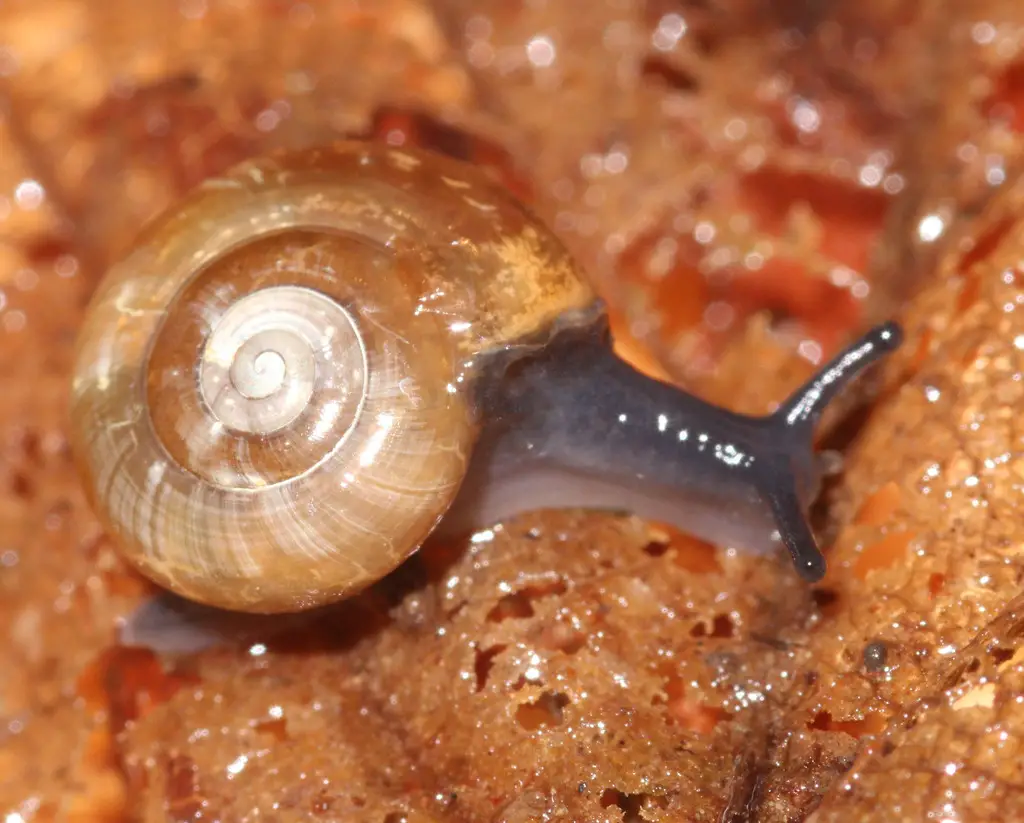
The Tropical Tramp Snail, represented by Oxychilus alliarius and related species, is a small land snail originally from Europe but occasionally recorded in Hawaiʻi. Its shell is smooth, glossy, and translucent brown, usually less than 1 centimeter across. Although not as widespread as other invasive species, its presence demonstrates the constant threat of new introductions to Hawaiʻi’s ecosystems.
This snail is primarily nocturnal, feeding on decaying organic material, fungi, and occasionally plant tissues. In its native range, it has been observed preying on other small invertebrates, making it somewhat unusual compared to strictly herbivorous snails. In Hawaiʻi, its ecological impact is still being studied, but it is considered an invasive species because of its adaptability and potential to disrupt local ecosystems.
The Tropical Tramp Snail reproduces readily under moist conditions. Eggs are laid in clusters in soil or beneath debris, and the young emerge fully formed as miniature adults. Like many invasive snails, it is spread through the movement of soil, potted plants, and nursery stock. Although it is not yet a major agricultural pest in Hawaiʻi, its potential to spread is a concern.
As with other non-native snails, this species can harbor parasites that are harmful to humans and animals. Its occasional detection in Hawaiʻi highlights the importance of continued monitoring and biosecurity efforts to prevent new invasive snail species from becoming established. Early detection and eradication are key strategies to avoid future ecological or economic damage.
Other Leatherleaf Slugs (Laevicaulis spp. and Veronicella spp.)
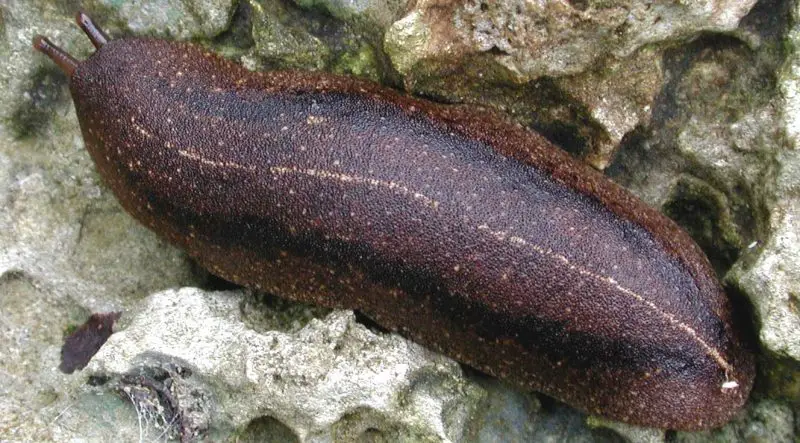
In addition to Laevicaulis alte and Veronicella cubensis, several related leatherleaf slug species are occasionally found in Hawaiʻi. These slugs are characterized by their long, soft, and leathery bodies, often light brown to gray in color. Unlike snails, they lack external shells, which allows them to squeeze into small hiding spots in soil, leaf litter, and under debris.
These slugs are generalist feeders, consuming a wide range of crops, ornamental plants, and decaying organic matter. They often appear in large numbers after rainfall, when conditions are most favorable for their activity and reproduction. Farmers and gardeners in Hawaiʻi consider them major pests, as they can destroy seedlings and reduce the yield of leafy vegetables and ornamentals.
Reproductive strategies also contribute to their invasiveness. Like many slugs, they are hermaphroditic and capable of producing multiple clutches of eggs per year. Their eggs are laid in moist soil, where they remain protected until hatching. This reproductive efficiency allows them to spread rapidly once established, making control efforts difficult.
Health concerns also arise from their presence. Leatherleaf slugs are known carriers of the rat lungworm parasite, which is particularly problematic in Hawaiʻi. Because of their widespread distribution and close contact with agricultural crops, they increase the risk of human exposure to this parasite. As a result, leatherleaf slugs are considered both agricultural and public health threats, requiring careful management to minimize their impact.
FAQs about Invasive Snails and Slugs in Hawaiʻi
What is the most dangerous invasive snail in Hawaiʻi?
The Giant African Snail (Lissachatina fulica) is considered the most dangerous invasive snail in Hawaiʻi due to its size, rapid reproduction, and ability to devastate crops. It also poses a health risk as a carrier of the rat lungworm parasite.
Which invasive snail spreads rat lungworm disease the most?
The semi-slug (Parmarion martensi) is the primary vector of rat lungworm disease in Hawaiʻi. Studies show this species carries the parasite at extremely high rates, making it a major concern for public health.
Are apple snails a problem in Hawaiʻi?
Yes. The Golden Apple Snail (Pomacea canaliculata) is a serious pest in taro patches and wetlands. It consumes young shoots, damages aquatic crops, and alters wetland ecosystems by stripping vegetation.
Do invasive snails affect native Hawaiian snails?
Absolutely. The Rosy Wolfsnail (Euglandina rosea), introduced as a failed biocontrol agent, has decimated many native tree snail species in Hawaiʻi. Its predatory habits are directly linked to extinctions of native snails.
How do invasive slugs affect gardens in Hawaiʻi?
Species such as the Tropical Leatherleaf Slug (Laevicaulis alte) and Cuban Slug (Veronicella cubensis) feed on ornamental plants, fruits, and vegetables. They also contaminate leafy crops, making them unsuitable for sale or consumption.
Can these invasive snails be controlled?
Control is difficult but possible with consistent measures. Hand-picking, barriers, traps, and bait pellets are commonly used in Hawaiʻi. However, due to their rapid reproduction, eradication is unlikely once they are established.
Why are there so many invasive snails in Hawaiʻi?
Hawaiʻi’s tropical climate, global trade, and lack of natural predators create the perfect conditions for invasive snails and slugs to thrive. Many were accidentally introduced through imported plants, soil, or cargo shipments.
Which invasive species are the smallest in Hawaiʻi?
The Subulina Snail (Subulina octona) and Paropeas Snail (Paropeas achatinaceum) are among the smallest invasive species. Although tiny, they spread quickly in soil and can impact greenhouse operations and gardens.

